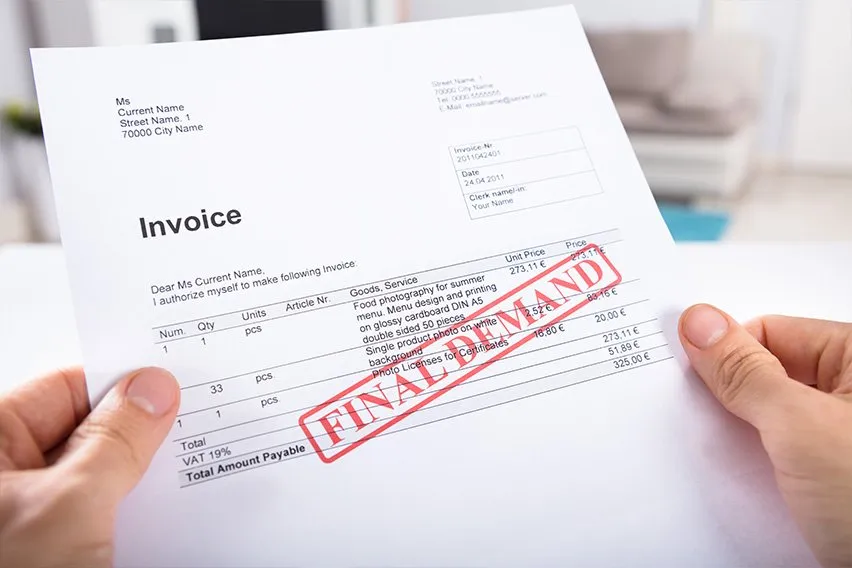What Is a Sundry Invoice? Definition & Example

Sundry invoices are sent to a company’s customers who rarely purchase on credit and whose purchase amounts aren’t significant. Sundry means various, miscellaneous, or diverse.
The term sundry comes from when bookkeeping was more of a manual task. In those days, bookkeepers had to add a page to the company’s ledger for each customer. If a page were added for every customer, even occasional customers with small transactions, the books would become cumbersome. So, bookkeepers added one page called sundry where those customers could be recorded. The need for sundry invoices has been significantly reduced in the age of accounting software.

This article will discuss the following relevant information:
What Does Sundry Mean in Accounting?
Sundry Invoice: How to Create One?
What Does Sundry Mean in Accounting?
Income generated from sources other than a company’s normal business operations is called sundry income. This income is usually not generated by selling the company’s products and services. It’s less predictable than the revenue from the business’s primary operations because it is associated with a one-time process or irregular activities that can’t be guaranteed sources of income over the long term.
Even though sundry income can be pretty trivial compared to the income generated from normal business activities, this does not mean the amounts are negligible. The defining characteristic of sundry income is the irregularity of the revenue, not the amount generated, so there’s no limit to the amount that can qualify as sundry income.
On a balance sheet or income statement, sundry income might be listed as miscellaneous income. This income must be recorded on financial statements as it affects a business’s net worth and needs to be reported to shareholders.
Sundry income also needs to be reported to the Internal Revenue Service (IRS) along with income generated from normal business operations.

Sundry income can come from various sources that can change from one accounting period to the next. Examples of sundry income sources include:
- Late fees
- Profits on the sales of minor assets
- Gains from foreign exchange
- Interest
Sundry accounting also encompasses irregular, small miscellaneous expenses that are not otherwise assigned to an account. The sources of sundry expenses might vary from one business to another, but they generally do not include operating expenses such as rent or mortgage payments, depreciation, utility payments, or employee pay and benefits.
Keeping track of small and irregular costs or payments can be stressful. Luckily, accounting software, like FreshBooks, makes keeping track of sundry income and expenses a breeze.
Sundry Invoice: How to Create One?
Sundry invoices will follow the same steps as creating other invoices. Stick with your same invoice template and continue with the next invoice number in your sequence. Include all sundry expenses and related services. If you’re a business owner dealing with foreign currencies, include the exchange rate on such an invoice. Also include payment terms, typically 30 days, but almost certainly less than three months. If you’re unsure about where and how to include credit terms, our article on What Does Net 30 Mean provides detailed insights. Feel free to add comments if it will increase clarity on sundry invoice costs.
The fastest and simplest way to create a sundry invoice is to use accounting software like FreshBooks. FreshBooks makes creating sundry invoices easy, and can even send sundry invoices directly to a client for you. Practice creating invoices with free-to-download invoice templates from FreshBooks.
Who are Sundry Creditors?
A sundry creditor is someone who gives goods or services to a client on a credit basis. The client agrees to pay the outstanding costs at a later date, as agreed between both parties. These are usually small-scale costs or clients who rarely buy on credit, therefore not warranting a separate ledger account. Sundry debtors are the clients in these circumstances who receive goods and services on credit.
Sundry Invoice Examples
Good examples of sundry invoices include smaller costs, just ensure that each deserves a spot on your general ledger.. The cost type will vary depending on your company. Examples include:
- Subscriptions
- Late fees
- Office accessories
- Meals and entertainment
- Training materials
FAQs on Sundry Invoices
What is a sundry vendor?
A sundry vendor is a company that provides products or services to a client that are either infrequent or lower costs. This may be a one-time client or an ongoing relationship for a company with too many small clients to each have their own ledger, such as a subscription provider.
What is the difference between sundry and debtors?
Because sundry refers to infrequent or insignificant purchase amounts, sundry debtors are a company’s clients who have made sundry purchases on credit and therefore owe money. On the other hand, a typical debtor will be a client who makes regular and larger credit purchases.
Are sundry expenses an asset?
Sundry expenses are miscellaneous additional costs that are typically considered expenses.
What is a sundry payment?
A sundry payment is any payment that goes towards sundry expenses. This could be a company’s payment of their own expenses or a payment received for a sundry invoice.
Reviewed by
Jason Ding is a seasoned accountant with over 15 years of progressive experience in senior finance and accounting across multiple industries. Jason holds a BBA from Simon Fraser University and is a designated CPA. Jason’s firm, Notion CPA, is an accounting firm with a business-first focus. The firm specializes in preparing personal and corporate taxation while providing fractional CFO work and leading the accounting and finance function for several small-to-medium-sized businesses. In his free time, you’ll find Jason on the basketball court, travelling, and spending quality time with family.
RELATED ARTICLES



 What Is Invoice Reconciliation?
What Is Invoice Reconciliation? Outstanding Invoice: What They Are & Tips To Handle Them
Outstanding Invoice: What They Are & Tips To Handle Them What Is a Supplier Invoice?
What Is a Supplier Invoice? What Is a VAT Invoice? Charging Value-Added Tax to EU Clients
What Is a VAT Invoice? Charging Value-Added Tax to EU Clients What Does FOB Mean on an Invoice? | Shipping Invoice Definitions
What Does FOB Mean on an Invoice? | Shipping Invoice Definitions Flat Rate vs Hourly Rate: What Should You Choose?
Flat Rate vs Hourly Rate: What Should You Choose?